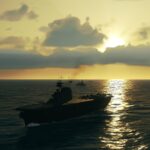The definition of what constitutes a wargame is still up for debate. Is it defined by a morale bar or the finite ammunition of your army? There’s no clear authority to dictate this, but personally, I believe the true essence of a wargame comes from rewarding players for employing sound tactics and achieving intended results.
Most RTS (Real-Time Strategy) games, on the other hand, punish you when you don’t adhere to the “meta”—grouping the “right” units and maintaining high clicks per minute (CPM). Unless there’s a compelling story, the gameplay often revolves around moving doom stacks across the map, trying to outproduce your opponent with sheer numbers.
I find this kind of gameplay tedious and uninspiring, which is one of the reasons I stopped playing RTS games for a while until I discovered wargaming. Thankfully, Slitherine, in their wisdom, chose to adopt the engine from Syrian Warfare for Terminator: Dark Fate – Defiance, and it has paid off in spades!
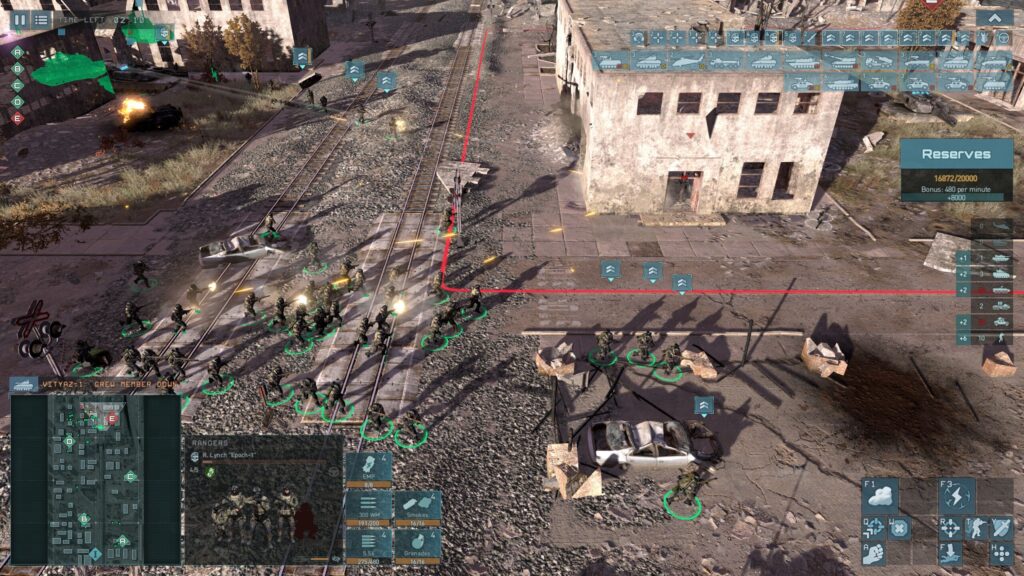
What Makes Terminator: Dark Fate Feel Like a Wargame
The combat is what truly makes this game feel like a wargame. From the desperation you feel when your troops have emptied their last magazines, to the way vehicles can suffer component damage or how a driver or gunner can be killed by a concussion from a shot—these are elements typically found in wargames, and they very much exist here in Terminator: Dark Fate: Defiance.
Another great example of the game’s wargame-like mechanics is its engine’s handling of CQC (Close Quarters Combat) or CQB (Close Quarters Battles). I’ve never seen a game handle this aspect as smoothly as this engine does! There’s even a dedicated button for this when taking over a building.
Your troops won’t simply rush into the building and engage in melee. Instead, your smart troops will actively shoot into the building while crawling or dashing to cover. They’ll toss grenades through the windows or other openings to suppress and minimize enemies inside.
After that, your troops begin engaging in hand-to-hand combat with the occupying forces, which you can see in action via silhouettes of their bodies through the building. Every infantry unit has a CQC meter that determines how well they perform in close-quarters battles, so it’s important to use the right infantry for this task.
Directional hits on vehicles also play a key role. Some hits can immobilize your vehicle, or render it temporarily unusable. While some damages can be repaired if you have enough supply, others are irreparable during a mission and require evacuation to a safe point.
Firefights, much like CQB action, are also realistic. They don’t begin and conclude in an instant; instead, they take time to resolve, especially if you have troops in opposing buildings that provide significant cover. The AI is smart enough to overwhelm you if it feels it has the advantage, so don’t underestimate it.
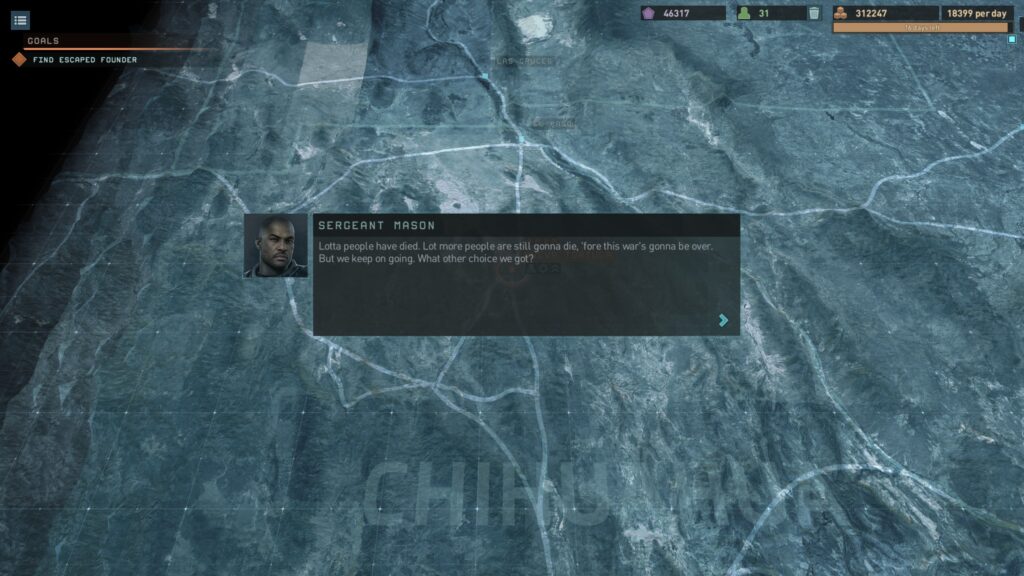
The Campaign and Factions
The centerpiece of the game is the campaign which immerses you in a dark, dystopian world inspired by Terminator: Dark Fate – Defiance. Collapsing skeletal buildings, dark streets, and a grim atmosphere perfectly reflect the Terminator universe.
The campaign starts out where you play as a human faction called the Founders. They are a conventional military force fighting for survival against the Terminator faction across the Midwest of the United States.
There are several factions available, but the one you’ll spend most of your time with is the Founders. You can recruit units from other factions to supplement your own army. Some vehicles can be captured, adding another layer to your tactical options. The other main human faction is the Movement, a ragtag group of mercenaries and militias still fighting against the Terminators. You also have factions like the Cartel and the Integrator, cybernetically enhanced humans who use advanced technology to further their cause.
There are no clear “good guys” in this world. You may end up fighting your own faction during the campaign based on your decisions, such as choosing whether to save key people. Some decisions will have significant outcomes—enemies you leave alive may come back to haunt you in later missions, while some actions reward you. I won’t be replaying the campaign to experience every possible outcome, but I can easily see others doing so. If you want, you can always save and reload to explore different decisions.
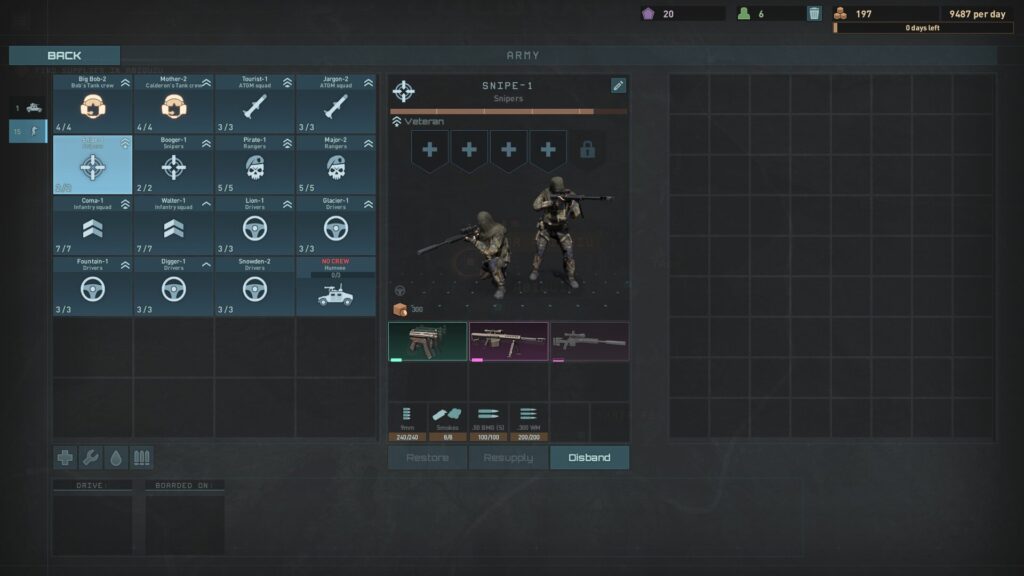
The Gameplay Loop and Resources
The game starts with you defending your base at Haven, but soon cyborgs and Terminators of all types—some even unseen in the film—overrun your position. Eventually, your base falls, and you’re left with whatever troops and vehicles you managed to save during your desperate escape. My advice for new players is to preserve your initial forces, as you won’t be able to recruit similar units until much later in the game, and even then, you’ll only obtain them from specific missions or by fulfilling secondary objectives.
The gameplay loop revolves around managing your army and resources on the overworld map. While similar to Syrian Warfare in offering a finite number of troops, Terminator: Dark Fate – Defiance also lets you customize your team’s loadouts and grant them new skills—such as enhanced armor or EMP grenades. These skills are tailored to specific troop types. For example, drivers gain abilities that improve gun handling and driving speed, while regular infantry may carry more ammunition or move faster. This adds a role-playing element, keeping the game interesting and helping you form a stronger attachment to your troops as they gain ranks.
You’ll manage three types of resources in the game, each serving different purposes. Goodwill points are used to upgrade your military by purchasing better equipment. Supply is used to resupply and repair your army and is consumed when traveling. Larger armies consume more supply during travel, limiting the number of days you have for resupply. Thankfully, there is no time pressure in either the overworld map or missions.
One of the most limited resources is manpower, which you’ll need to replenish fallen troops. This forces you to safeguard your injured squads instead of risking them unnecessarily, preserving their experience and weaponry. Those initial military units you received? They’re precious, and you don’t want to lose them—so save your game if you must!
Things to Consider
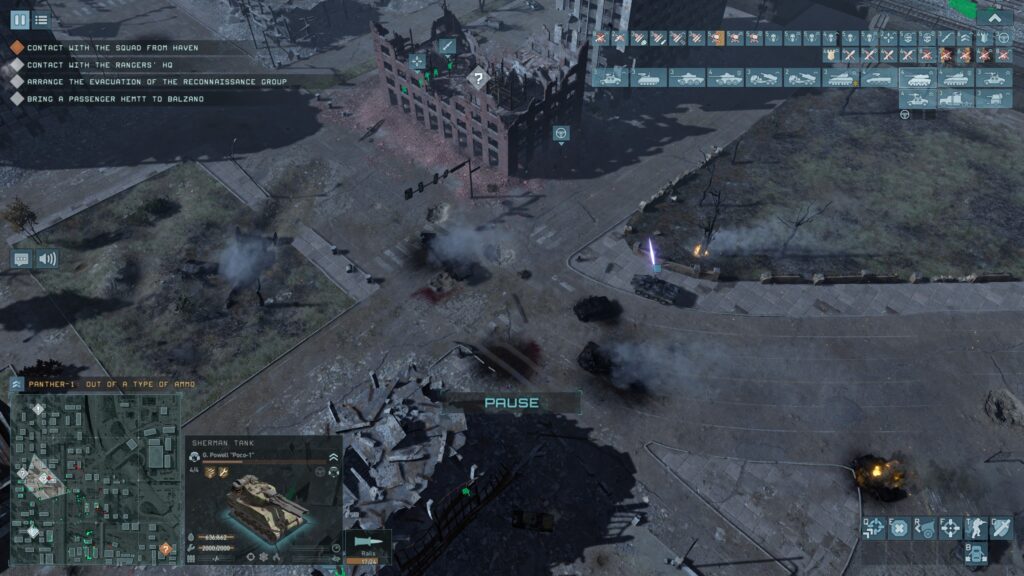
There isn’t much to dislike about the game. The campaign story is fun and engaging for a Terminator game—dark, gritty, with some lighthearted moments sprinkled throughout. However, the skirmish mode is somewhat underdeveloped, with only a dozen or so maps and no team-based games. It’s likely something you’ll use just occasionally.
Technically, multiplayer is available, but the player base is sparse across the three regional servers (US, EU, and SEA), so you shouldn’t expect much PvP action.
One gripe I have relates to the morale system. In Terminator: Dark Fate – Defiance and Syrian Warfare, troops can get suppressed or break and run, but this feature is missing here. Introducing such a system could make the game feel more complete, though I’m not sure how it would work with Terminators, who are machines. Perhaps there could be a power balance dynamic between the factions?
Final Thoughts
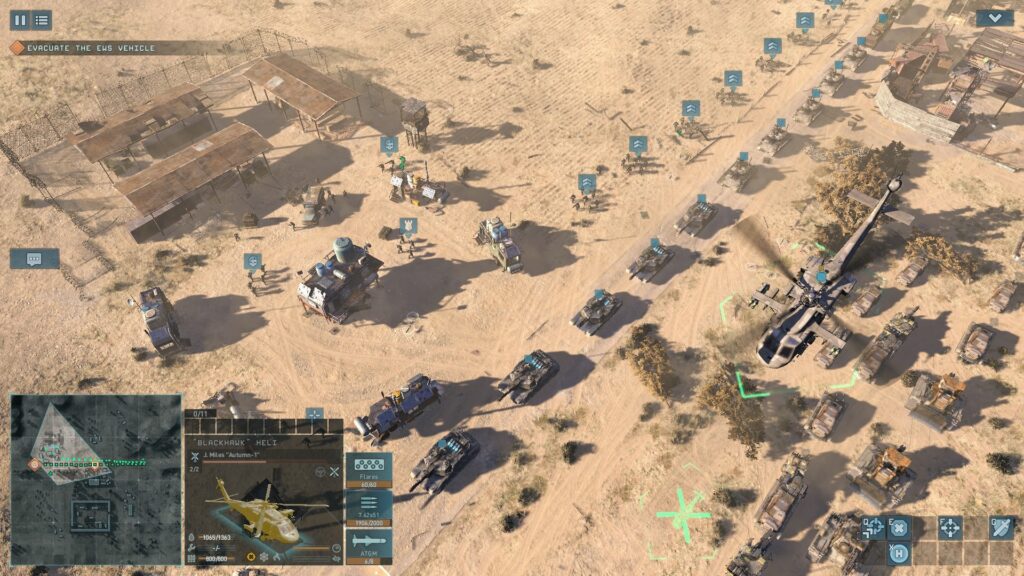
As an avid wargamer, I highly recommend this game to strategy and wargame fans. While it’s not historical, the mechanics and elements make it stand out. And if you’re a fan of the Terminator series, you’ll definitely appreciate how the game pays homage to it. If that’s not enough, there’s already one new DLC that lets you play as the Terminators themselves! There are also two more DLC campaigns planned for the future.
Now, if you’ll excuse me, I’ll be rewatching the Terminator series over the weekend.





